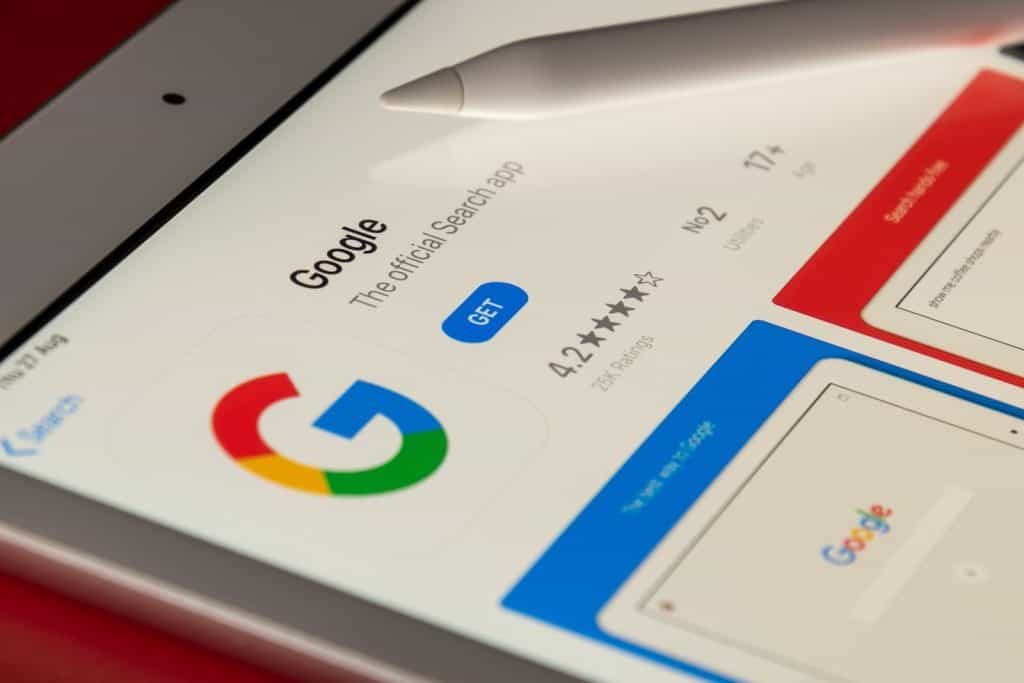In This Article

Save this List of Marketing Objectives to your favorites — you’ll want to keep coming back here!
Want to know the biggest predictor of profitability (making money) for your business? Having making money as a marketing objective!
The biggest complaint I hear is that small businesses are frustrated by their marketing efforts (and their marketing team) for not meeting marketing goals.
Sure, you’ve picked an overall
In this article I’m going to demystify marketing objectives, how to set smart marketing objectives and measurable marketing objectives, how to track marketing objectives, and I’m going to give you a big giant list of examples of marketing objectives.
When you’re done, you and your whole marketing team will start to see your marketing efforts pay off just by setting measurable marketing objectives.
Let’s get started.
Key Takeaways
- Marketing objectives are essential for guiding marketing efforts, measuring progress, and aligning with overall business goals. They should be S.M.A.R.T (Specific, Measurable, Achievable, Relevant, Time-bound) to effectively direct initiatives towards achieving broader marketing and business targets.
- Customer-centric objectives such as increasing loyalty, encouraging repeat purchases, and reducing churn are vital for existing customers, while expansion of market reach, lead generation, and conversion rate optimization are key for attracting new customers.
- Brand development and website optimization are also crucial, with strategies focused on boosting brand awareness, establishing brand authority, and engaging with users, alongside driving website traffic, enhancing user experience, and maximizing website conversion rates.
Understanding Marketing Objectives

Imagine setting out on a journey without a destination in mind. It would be an aimless adventure with no end in sight, right? This is precisely why marketing objectives are paramount. They provide a clear direction for your marketing activities, aligning them with your overall business goals and guiding your marketing teams towards achieving the desired marketing objective through effective marketing campaigns.
When you define your business goals and identify your target audience, you lay the foundation for your
- Establishing specific, measurable objectives
- Collaboratively devising a plan with your marketing team
- Ensuring continuous monitoring and adjustment of objectives as required.
Defining Marketing Objectives
Marketing objectives are the stepping stones that guide you to your broader marketing goals. They are the actionable steps that you take to navigate the path to success. These objectives are often characterized by their specificity, measurability, achievability, relevance, and time-bound nature, known as the S.M.A.R.T goals. However, merely identifying these measurable marketing objectives isn’t enough; understanding examples of marketing objectives can provide valuable insights for your strategy.
Documenting them and executing a structured plan to attain them is the next crucial step. Keep in mind that each objective should act as a guiding light, directing your marketing initiatives towards your ultimate marketing goals. Monitoring these objectives is the key to measuring progress and making necessary adjustments to your marketing plan.
Importance of Marketing Objectives
Marketing objectives are important for several reasons:
- They provide direction and guidance for marketing efforts.
- They help measure progress and success.
- They maintain focus and ensure alignment with overall business goals.
- They help prioritize marketing efforts effectively. By setting clear and specific marketing objectives, businesses can make informed decisions and achieve their desired outcomes.
Picture them as the compass that ensures every step you take is in the right direction, bringing you closer to your business objectives.
Characteristics of Effective Marketing Objectives
How can you gauge the effectiveness of your marketing objectives? The answer lies in the SMART framework. Your objectives should be:
- Specific: Having a specific goal with clear metrics helps focus your efforts.
- Measurable: Making sure that your objectives are measurable enables you to track progress.
- Achievable: Your goals should be achievable, customized to your business’s capacities.
- Relevant: Your objectives should be relevant to your overall business goals and strategies.
- Time-bound: Setting a deadline for your objectives helps create a sense of urgency and accountability.
By following the SMART framework, you can ensure that your marketing objectives are effective and aligned with your business goals.
They should align with the overall purpose of your business to ensure that resources are effectively utilized to contribute to the company’s strategic goals. And lastly, incorporating a specific time frame into your marketing objectives, such as aiming to increase the Facebook audience by acquiring 100 followers monthly over the next 3 months, establishes a tangible deadline for accomplishment.
Marketing Objectives for Existing Customers

Retaining customers once they’ve been acquired is crucial. After all, customer loyalty provides stability to your business by ensuring a consistent revenue stream. Your existing customers are a goldmine of potential, from repeat purchases to word-of-mouth recommendations.
What strategies can you employ to exploit this potential? By focusing on three key objectives: increasing customer loyalty, encouraging repeat purchases, and reducing customer churn.
Increasing Customer Loyalty
Loyal customers are the lifeblood of any thriving business. They not only provide continuous revenue but also serve as brand ambassadors, spreading positive word-of-mouth about your business. What steps can you take to earn their loyalty? By creating personalized experiences, offering rewards, and maintaining consistent communication.
Remember, the more valued your customers feel, the more loyal they’ll be to your brand.
Encouraging Repeat Purchases
Repeat purchases are like the gift that keeps on giving. They not only boost your sales but also increase your customer lifetime value. To encourage repeat purchases, consider implementing targeted promotions, upselling, and cross-selling strategies.
The more your customers buy, the more value they bring to your business.
Reducing Customer Churn
While attracting new customers is important, retaining your existing ones is equally crucial. After all, it’s more cost-effective to keep a customer than to acquire a new one. By improving the quality of customer service and fostering a sense of community, you can reduce customer churn and increase customer retention rates.
Remember, a retained customer is a revenue-generating asset.
Marketing Objectives for New Customers and Lead Generation

You’ve successfully retained your existing customers. Now, it’s time to cast your net wider and reel in some new customers. What strategies can you employ to attract new customers and generate leads? By expanding your market reach, enhancing your lead generation efforts, and optimizing your conversion rates.
Expanding Market Reach
The first step to attracting new customers is reaching them. By identifying new target audiences, entering new markets, and leveraging various marketing channels, you can expand your market reach. But remember, expanding your market reach is not about casting your net blindly. It’s about strategically positioning your bait where the fish are.
Enhancing Lead Generation Efforts
Once you’ve expanded your market reach, the next step is to generate leads. This involves creating compelling content, utilizing targeted advertising, and optimizing your landing pages. Remember, a lead is a potential customer who’s shown interest in your product or service. And every lead you generate brings you one step closer to a sale.
Optimizing Conversion Rates
Generating leads is great, but it’s not enough. You need to convert these leads into customers. What strategies can be implemented to achieve this? By analyzing customer behavior, refining your marketing messages, and improving user experience.
Remember, the higher your conversion rate, the more customers you get for the same marketing spend.
Marketing Objectives for Your Brand

Now that we’ve covered how to set marketing objectives for your customers, let’s shift our focus to your brand. Your brand is your business’s identity. It’s what sets you apart from your competitors and makes you unique.
What strategies can you use to build a robust brand identity and reputation? By boosting brand awareness, establishing brand authority, and cultivating brand engagement.
Boosting Brand Awareness
Brand awareness is all about making your brand known and recognized. It’s about getting your brand in front of as many eyes as possible. By leveraging various marketing channels, creating shareable content, and participating in industry events, you can increase brand awareness.
Remember, the more people who know about your brand, the more potential customers you have.
Establishing Brand Authority
Brand authority is about positioning your brand as a leader in your industry. It’s about building trust and credibility with your customers. By providing valuable content, showcasing your expertise, and building trust with your customers, you can establish your brand authority.
Remember, a brand with strong authority is seen as more trustworthy and reliable, influencing consumer purchasing behavior and enhancing your brand’s overall reputation.
Cultivating Brand Engagement
Brand engagement is about creating a connection with your customers. It revolves around stimulating your customers to interact and engage with your brand. By creating interactive content, fostering online communities, and encouraging user-generated content, you can cultivate brand engagement.
Remember, the more engaged your customers are with your brand, the more loyal they’ll be.
Marketing Objectives for Website

Your website is your business’s digital home. It’s the place where your customers go to learn more about your business, products, and services. What measures can you take to optimize your website, thereby attracting more visitors, providing a superior user experience, and converting these visitors into leads or sales? By driving website traffic, enhancing user experience, and maximizing conversion rates.
Driving Website Traffic
Website traffic is the lifeblood of your online business. The more people who visit your website, the more opportunities you have to generate leads and make sales. By implementing effective SEO strategies, creating engaging content, and leveraging targeted advertising, you can drive more traffic to your website.
Enhancing User Experience
A good user experience on your website is crucial. It’s what keeps your visitors on your website and encourages them to take action. By optimizing your website design, improving site navigation, and ensuring mobile-friendliness, you can enhance the user experience on your website.
Maximizing Conversion Rates
Website traffic and a good user experience are great, but they’re not enough. You need to convert your website visitors into leads or sales. What strategies can be implemented to achieve this? By crafting compelling calls-to-action, writing persuasive copy, and streamlining your checkout processes.
Remember, the higher your conversion rate, the more leads and sales you get for the same amount of traffic.
Marketing Objectives for Products and Services
Shifting our focus to your products and services, How can you set effective marketing objectives to drive sales and revenue, improve product positioning, and expand your market share? By optimizing pricing strategies, creating compelling promotions, and leveraging upselling and cross-selling opportunities as part of your marketing strategies.
Increasing Sales and Revenue
Increasing sales and revenue is the ultimate goal of any business. What strategies can you employ to reach this goal? By optimizing your pricing strategies, creating compelling promotions, and leveraging upselling and cross-selling opportunities.
Remember, every sale you make adds to your bottom line.
Improving Product Positioning
Product positioning is about how your product is perceived in the market. It’s about how your product stands out from your competitors and how it meets the needs of your customers. By understanding your customers’ needs, differentiating from your competitors, and communicating your unique value propositions, you can improve your product positioning.
Expanding Market Share
Market share represents the portion of the market that your business owns. It’s a measure of your business’s competitiveness in the market. By conducting market research, identifying growth opportunities, targeting new customer segments, and outperforming your competitors, you can expand your market share.
Marketing Objectives for Email Marketing
Email marketing is a powerful tool in your marketing arsenal. It allows you to reach your customers directly in their inboxes. What strategies can you leverage to maximize your email marketing efforts? By growing your email list, boosting your open and click-through rates, and enhancing subscriber engagement.
Growing Email List
Your email list is a direct line to your customers. It’s a valuable asset that allows you to communicate with your customers on a personal level. By offering valuable incentives, optimizing your sign-up forms, and leveraging your social media channels, you can grow your email list.
Boosting Open and Click-Through Rates
Open and click-through rates are crucial key performance indicators in email marketing. They measure how many people are opening your emails and clicking on your links. By using tools like Google Analytics, you can gain insights into these metrics and improve your campaigns.
By crafting compelling subject lines, personalizing your content, and optimizing your send times, you can boost your open and click-through rates.
Enhancing Subscriber Engagement
Subscriber engagement is about how your subscribers interact with your emails. It’s a measure of how interesting and relevant your emails are to your subscribers. By segmenting your email list, providing relevant content, and encouraging feedback and interaction, you can enhance subscriber engagement.
Marketing Objectives for Customer Engagement
Customer engagement is about creating a connection with your customers. It revolves around stimulating your customers to interact and engage with your brand. By strengthening your social media presence and improving your customer support, you can foster customer engagement and build lasting relationships with your customers.
Strengthening Social Media Presence
Social media is a powerful tool for customer engagement. It provides a platform for your customers to interact with your brand on a personal level. By creating engaging content, responding to comments, and participating in relevant conversations, you can strengthen your social media presence and boost social media engagement.
Improving Customer Support
Customer support is a critical aspect of customer engagement. It’s about how you respond to your customers’ queries and concerns. By offering multiple support channels, providing timely assistance, and proactively addressing customer concerns, you can improve your customer support and enhance customer engagement.
Summary
In the world of business, the destination is as important as the journey. Setting effective marketing objectives is the roadmap that guides your journey to business success. By understanding what marketing objectives are, how to set them, and how to apply them to different areas of your business, you can navigate your way to success. So, are you ready to chart your course and set sail towards your business goals?
Frequently Asked Questions
What are marketing objectives?
Marketing objectives are the measurable outcomes a brand aims to achieve through its marketing activities, guiding efforts in a strategic and focused manner. They should be aligned with business goals and provide specific targets to be met within a set time frame.
What are the 5 characteristics of an effective marketing objective?
The 5 characteristics of an effective marketing objective are that they should be Specific, Measurable, Achievable, Relevant, and Time-Bound (SMART). These characteristics ensure success and a thorough understanding of the audience and market positioning.
What are the 4 purposes of marketing?
The four purposes of marketing are creating brand awareness, retaining existing customers, developing new customers, and strengthening brand association and recall. These objectives are essential for a successful
What is the difference between marketing goals and marketing objectives?
The difference between marketing goals and marketing objectives is that goals are general aspirations, while objectives are specific steps and milestones toward achieving those aspirations. Therefore, goals focus on the overall vision, while objectives define the actionable steps.
What are some marketing objectives for social media?
Some marketing objectives for social media include increasing following and engagement, encouraging shares, and optimizing profiles on key platforms. These objectives can help to build a strong social media presence and reach a larger audience.